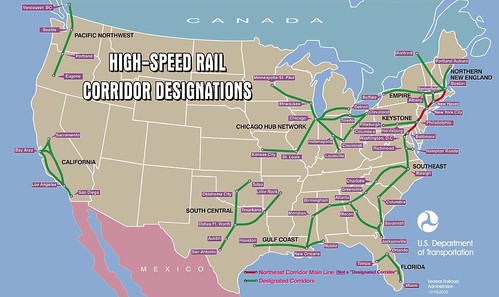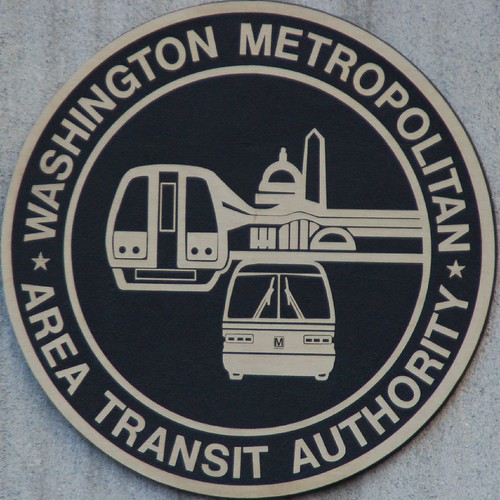
Highlights from the ITE 2009 Technical Conference and Exhibit
http://www.ite.org/
Category > Now Available: March 25, 2009 (ITE)
The ITE 2009 Technical Conference and Exhibit, “Transportation Operations in Action”, opened this week with a positive outlook on the ways the transportation engineering community can rise to today’s economic challenges by effectively managing and operating our transportation systems. While budget shortfalls and employee layoffs have had crippling effects on many state and local governments, transportation professionals stand poised to rebuild the United States’ economy and infrastructure through the recently passed American Recovery and Reinvestment Act (ARRA).
Keynote speakers Anthony (Tony) R. Kane, Ph.D., director of engineering and technical services for the American Association of State Highway and Transportation Officials (AASHTO), and Randell (Randy) Iwasaki, chief deputy director for the California Department of Transportation, addressed the opportunities, challenges and responsibilities that ARRA funding presents to the transportation engineering community. While the challenges in obligating funding and executing projects in a short amount of time with a high level of transparency can be great, so can be the rewards. The speakers advised local jurisdictions to work with their state departments of transportation.
Immediately following the opening session, ITE Public Information Manager Michelle Birdsall interviewed keynote speakers Tony Kane and Randy Iwasaki, bringing together their main points and observations regarding transportation management and operations opportunities in relation to the American Recovery and Reinvestment Act (ARRA). Click here to listen to the interview: http://www.ite.org/Conference/Interview032309.wav
A New Approach to Traffic Signal Timing Education and Training: Mobile Signal Timing Training (MOST) Webinar
http://www.pcb.its.dot.gov/t3/s090415_most.asp
Category > Opportunity: March 25, 2009 (FHWA)
This free T3 Webinar will take place April 15, 2009, from 1:00-2:30 p.m. ET. The Webinar introduces Mobile Signal Timing (MOST) training, an exciting new approach to learning traffic signal timing. MOST uses a simulated traffic signal environment to provide traffic engineers with immediate visual feedback on how changes to signal timing parameters affect the quality of traffic operations at a signalized intersection. This T3 Webinar will provide an overview of the tools and concepts used in the MOST training and will include demonstrations of the laboratories and the simulation software as it responds to real-world signal timing scenarios. The MOST training is currently being developed and is geared toward practicing traffic engineers in state or local transportation agencies, as well as toward new engineers embarking on their career.
This Webinar is an overview of the simulations and tools used in MOST training. It’s intended to highlight the unique delivery of MOST training. It is not the full MOST training course. The MOST training course, currently being developed, will expand significantly on the concepts presented in the Webinar. You can learn more about the MOST course at http://www.webs1.uidaho.edu/most/. To register for the Webinar, click on the link above.
Traffic Signal Timing Manual: Now Available for Order
http://www.ite.org/emodules/scriptcontent/Orders/ProductDetail.cfm?pc=TB-020
Category > Now Available: March 25, 2009 (FHWA)
In an effort to provide signal timing practitioners with resources to help them improve traffic signal timing, the Federal Highway Administration developed the Traffic Signal Timing Manual. The manual, a culmination of research into practices across North America, is intended to provide a comprehensive collection of traffic signal timing concepts, analytical procedures and applications contained within a single publication. FHWA developed the Traffic Signal Timing Manual in 2008 as an easy-to-use, concise, practical and modular guide. Focusing on the principles of traffic signal timing, the manual identifies sound timing practices and serves as a practical and comprehensive tabletop resource. Kittelson & Associates Inc., which led the work on this effort in association with the Texas Transportation Institute (ITE), the University of Maryland, Purdue University, Siemens ITS and the Institute of Transportation Engineers, noted that traffic signal timing practitioners previously lacked a comprehensive guide on traffic signal timing and operations, as traffic signal documentation was dispersed throughout various journals and texts.
This publication will ship in April 2009. Click on the link above to order.
Member Price: $ 50.00
Non-Member Price: $ 62.50
Item #TB-020
New Jersey’s I-295/I-76/Route 42 ‘Direct Connection’ Project Receives Green Light
http://www.dot.gov/affairs/dot3309.htm
Category > Breaking News: March 25, 2009 (FHWA)
Plans for a $900 million upgrade to New Jersey’s I-295/I-76/Route 42 interchange can move forward now that federal officials have given final environmental approval, U.S. Transportation Secretary Ray LaHood announced today.
“This project will help the people of New Jersey and their economy,” said Secretary LaHood. “Infrastructure investment like this creates jobs and helps local businesses.”
“We are pleased with the Federal Highway Administration’s record of decision,” said New Jersey Governor Jon S. Corzine. “These are the kinds of infrastructure improvement projects that will get our economy moving and put our citizens back to work.”
The record of decision signed today by officials from the Federal Highway Administration allows the project’s right-of-way acquisition and construction planning to begin. When completed, the improved interchange will improve safety and relieve congestion significantly.
The project – dubbed “Direct Connection” – calls for the reconstruction of the interchange to separate drivers on I-295 from local traffic. It will include new roadway and bridges and completes a missing link on I-295 that will allow drivers to continue straight through on the interstate. Currently, I-295 drivers going through the interchange are forced to reduce speed drastically to merge onto 35-mph ramps also used by local traffic. The improvements will allow a safer drive without the dangerous merging and weaving movements on existing ramps.
New Publication: iFlorida Model Deployment Final Evaluation Report
http://www.ops.fhwa.dot.gov/publications/fhwahop08050/index.htm
Category > Now Available: March 25, 2009 (FHWA)
This document is the final report for the evaluation of the U.S. DOT-sponsored Surface Transportation Security and Reliability Information System Model Deployment, or iFlorida Model Deployment.
Upcoming Talking Operations Web Cast: April 1
http://www.ntoctalks.com/web_casts.php
Category > Opportunity: March 11, 2009 (NTOC)
This Talking Operations Web cast on the 95 Express project in Miami, Florida, will take place on April 1, 2009, from 3:00 p.m. to 4:30 p.m. EDT. The 95 Express opened in Miami-Dade County on December 5, 2008. This project converted a single High Occupancy Vehicle (HOV) lane into 2 variably priced express lanes. The project also enhanced and expanded Bus Rapid Transit service on I-95 from I-395 in downtown Miami to Broward Boulevard in Fort Lauderdale, reducing congestion on that heavily traveled north-south artery. Tolls will vary with level of congestion, the goal being to keep traffic in the express lanes moving at a minimum speed of 45 mph. Registered vanpools, registered carpools of 3+, registered hybrid vehicles and motorcycles can use the lanes without paying a toll. Buses of several types can also use the lanes toll-free -Miami-Dade and Broward County express and regular transit, public school and over-the-road. Trucks of three or more axles will not be allowed to use the express lanes.
An update on the various aspects of this project will be provided. The presentation will provide information on traffic and revenue, operational statistics, toll-free registrations and lessons learned. Registration is available athttp://www.ntoctalks.com/web_casts.php.
South Florida Interstate 95 Express Project: Lessons Learned
http://www.ops.fhwa.dot.gov/tolling_pricing/value_pricing/pubs_reports/projectreports/sfl_95express_proj/index.htm
Category > Now Available: March 25, 2009 (FHWA)
The Florida Department of Transportation has prepared a brief lessons learned document outlining their experience implementing the 95 Express Lanes UPA project.
Midwestern Governors Endorse VMT Tax
http://www.midwesterngovernors.org/Publications/Transportation_Recommendations.pdf
Category > Now Available: March 25, 2009 (AASHTO)
Taxing drivers per vehicle mile traveled rather than fuel consumption, public/private partnerships and congestion pricing are among the innovative highway funding mechanisms recommended in a report issued last week by the Midwestern Governors Association.
The report was drafted by an advisory group the 11 governors formed last year to help them coordinate recommendations to Congress on this year’s surface transportation authorization legislation. It suggests the federal government should maintain a “strong” role in funding surface transportation programs by ensuring federal investment levels do not decline. Federal priorities should focus on preservation, rural and urban access, and connectivity in addition to congestion reduction, according to the report. The 22-page report is available through the link above.
Research and Markets: Eco-driving-Harnessing the Potential of ITS – Available Now
http://www.live-pr.com/en/research-and-markets-eco-driving-harnessing-the-r1048266003.htm
Category > Now Available: March 25, 2009 (NTOC)
Research and Markets has announced the addition of the “Eco-driving-Harnessing the Potential of ITS” report to their offering. How can in-vehicle telematics and ITS systems reduce emissions? Increasing pressure from government and society on vehicle manufacturers to address the environmental impact of cars is one of the biggest industry challenges being faced today. “Eco-driving – Harnessing the green potential of ITS” provides an in-depth analysis of how the implementation of navigation, ADAS and telematics systems can be used to achieve true integrated eco-driving.
ITS America’s 2009 Annual Meeting and Exposition: Early Bird Registration Ends March 31
http://www.itsa.org/amregistration.html
Category > Opportunity: March 25, 2009 (ITS America)
Registration for the 2009 Annual Meeting and Exposition of the Intelligent Transportation Society of America (ITS America) is now open. The three-day conference, held June 1-3, 2009 at the Gaylord National Resort and Convention Center in National Harbor, Maryland (just inside the Washington, DC metropolitan area), provides the intelligent transportation systems (ITS) industry with a forum to learn about and share insights on the latest advancements in ITS technologies. Don’t miss this opportunity to find answers to your toughest transportation challenges, meet your legislators on Capitol Hill, see ITS solutions in action, and take home ideas for implementation, and learn from your peers. Be sure to take advantage of the early-bird registration rates which are available through March 31. Click the link above to register at the early bird rate by March 31.








